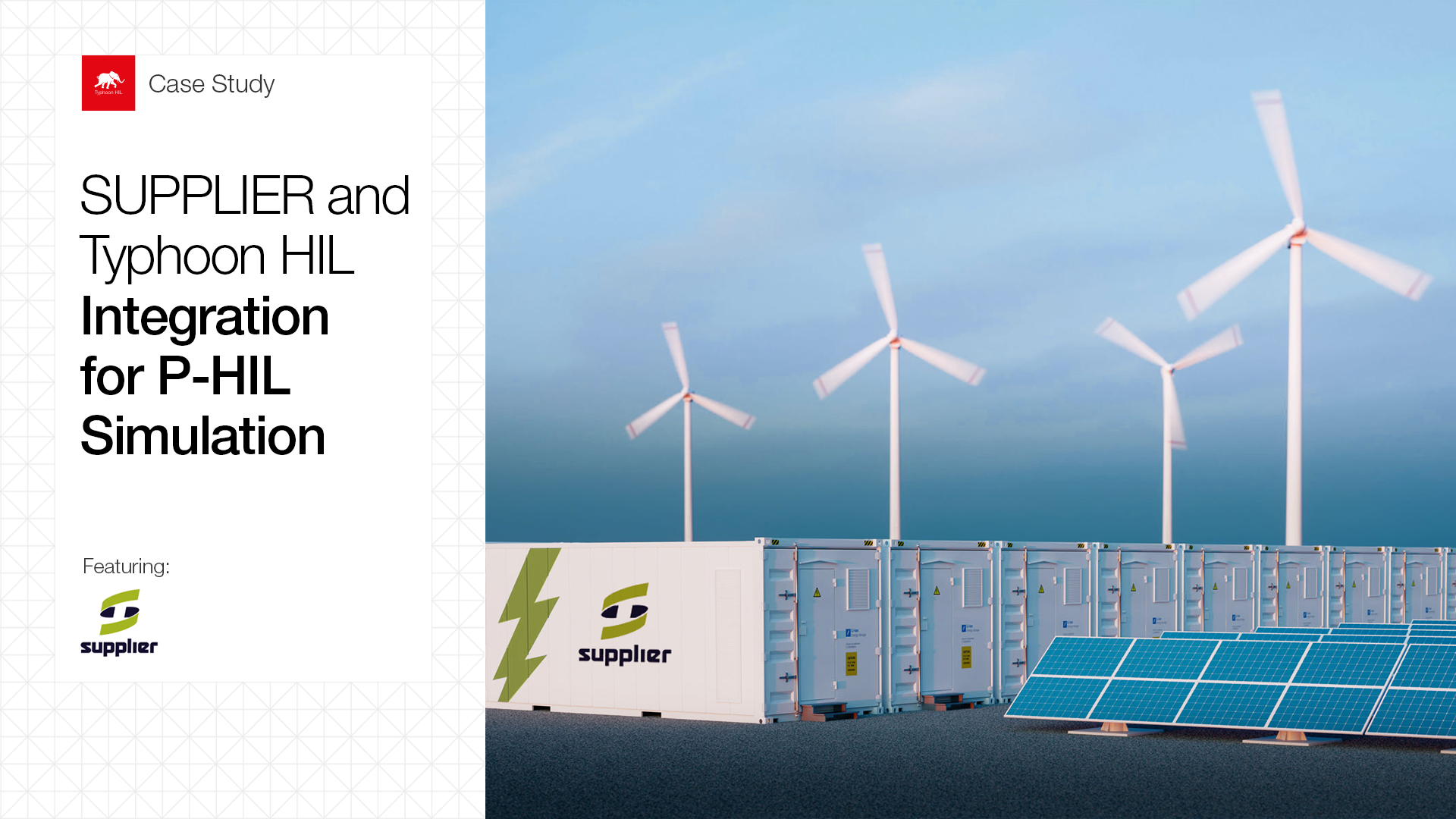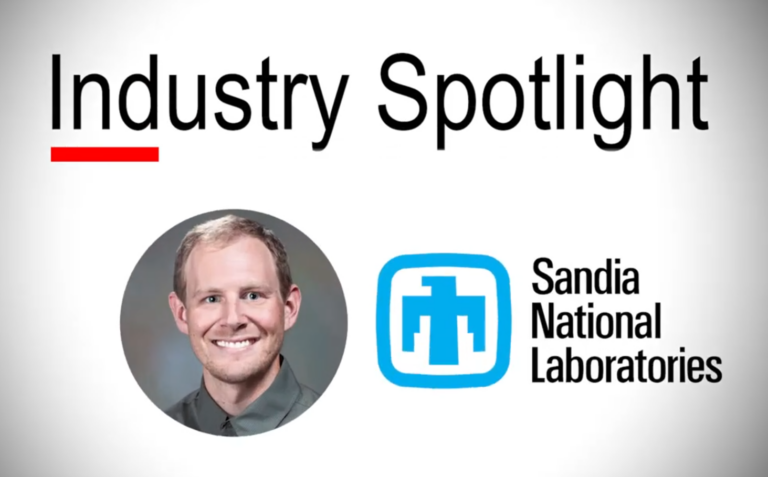Introduction | Real-time control in power sources
A P-HIL simulation consists of controlling a power device in real-time through analog inputs and outputs. In these systems, the power devices are typically converters or power sources that operate as power amplifiers. Therefore, the power devices output waveforms that can be easily controlled according to testing and standard requirements.
In applications such as microgrids and electric vehicles there is an interest to verify system operation for different energy generation scenarios, load characteristics, and battery charge and discharge profiles. In this context, the use of power supply sources operating in P-HIL mode allows for emulating numerous test scenarios in a simple and practical way through an external low voltage and low current analog reference.
Solution | SUPPLIER and Typhoon HIL integration for P-HIL simulation
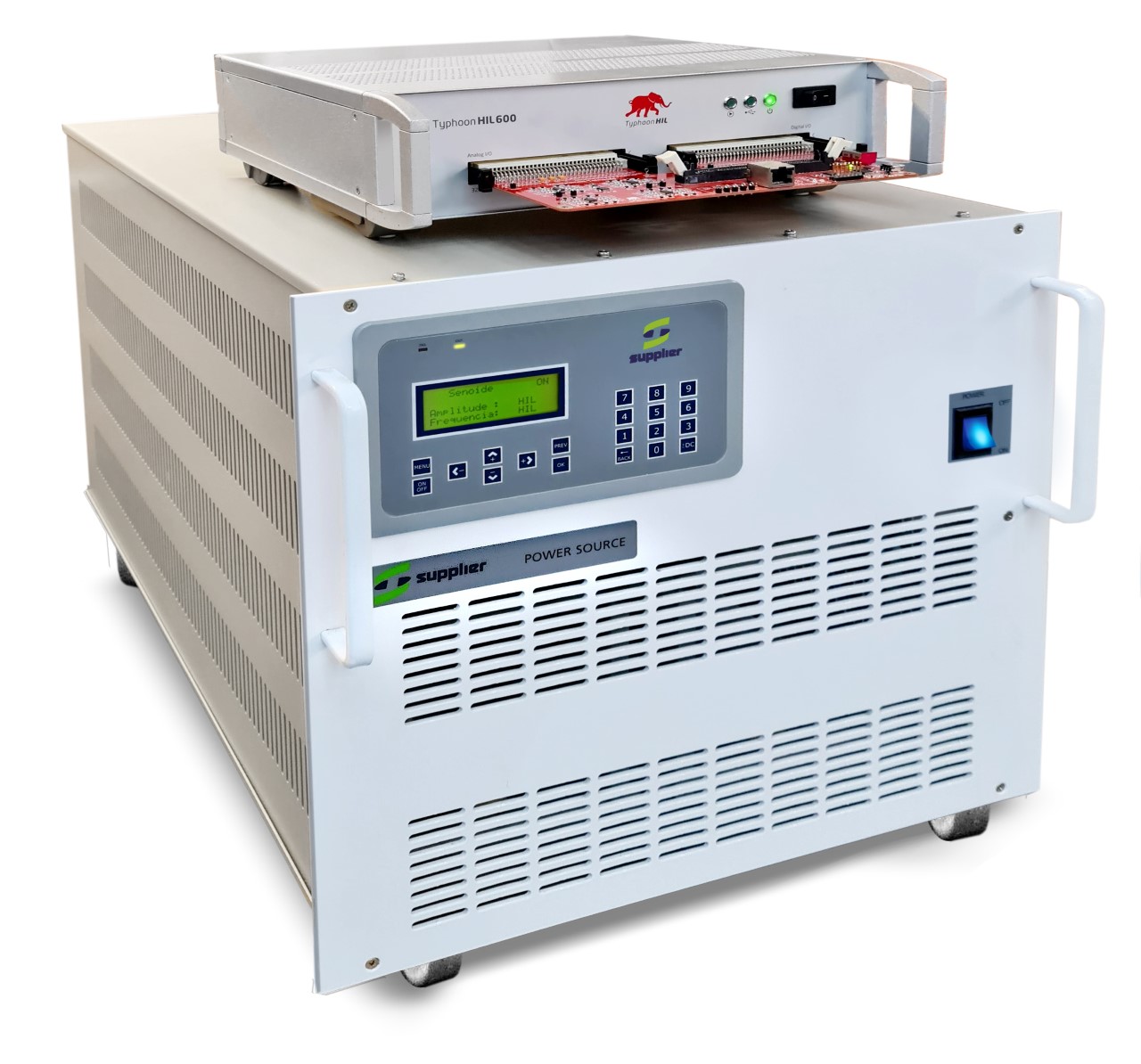
SUPPLIER develops custom AC and DC voltage or current sources and electronic loads that can be integrated with any Typhoon HIL device. All of SUPPLIER’s power sources have customizable output power, current, voltage, and frequency range for 1, 2, and 4 quadrant operation. The devices provide versatility for microgrid, electric vehicle, power quality, and renewable energy applications through the P-HIL optional module. The SUPPLIER and Typhoon HIL integration is available as an upgrade for SUPPLIER’s existing power source, allowing several new testing possibilities.

Figure 3. presents an example of SUPPLIER’s power source with Typhoon HIL integration for microgrid testing. The power hardware consists of SUPPLIER’s 4-quadrant power source (FCAMQ 1100-33-15-PFC55251) that can operate as a power amplifier and reproduce the waveform generated in the Typhoon HIL Control Center in real-time. In addition, the source returns the real-time output voltage and current signals from internal sensors. The signals can be sampled through the Typhoon HIL hardware interface, processed on the HIL SCADA software interface, and then used to generate new output voltage references. In this way, we can control the amplitude, frequency, and harmonics on the microgrid or the device under test (DUT).
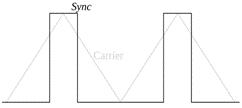
The power source provides the output voltage measurement (VO’), the output filter voltage (VC’), and current (IL’) measurements, all in real-time. The sensor signals are isolated, filtered, and conditioned to match with the Typhoon HIL analog inputs. In addition, a reference synchronization signal (Sync) from the internal modulator’s carrier (on the power source switching frequency) is available for sampling synchronization, as shown in Figure 3. The reference signal (Vref) is connected directly from the HIL Interface Board to the SUPPLIER power source analog input to control VO instantly as a power amplifier. Figure 4 shows the internal connection diagram. All SUPPLIER’s power sources can be customized so that other voltage and current measurements can be made available and conditioned for other Typhoon HIL devices.
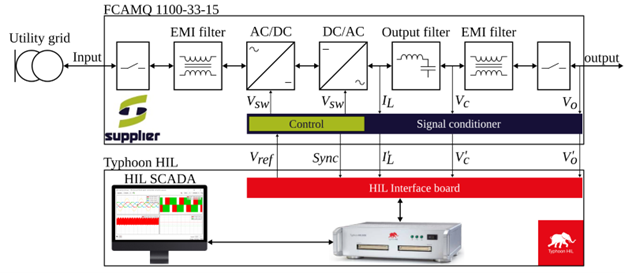
To illustrate system operation, Figure 5 shows the source output voltage (VO – CH1) controlled by an extra low voltage reference signal (Vref – CH3) and its respective voltage measurement (VO’ – CH2). Figure 6 illustrates the frequency response of VO/Vref, which can also be customized according to the customer’s needs.
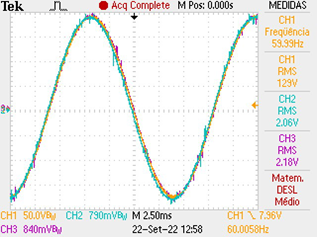

Additional information | Learn more about SUPPLIER
SUPPLIER Trade and Manufacture is a Brazilian company that produces power supplies and power electronic converters with special features. SUPPLIER’s products are fully customized, allowing customers to choose hardware characteristics such as power, voltage, current, frequency, as well as software features like control strategies, measures, output virtual impedance, communication modes, grid or other power sources sync, among others. SUPPLIER’s main products are sinusoidal power sources (single and multi-phase), generic waveform ac power sources, dc power sources, pulsed dc power sources, solutions for ac and dc microgrids, hipot for isolation tests, and others. You can visit the SUPPLIER website and reach out to build a solution for your energy conversion needs together.
Credits
Text | Luiz Henrique Meneghetti with contributions by Marcello Mezaroba, Alessandro Batschauer, Gustavo Lambert, and Filipe Fernandes.
Visuals | Luiz Henrique Meneghetti
Editors | Debora Santo, Sergio Costa
